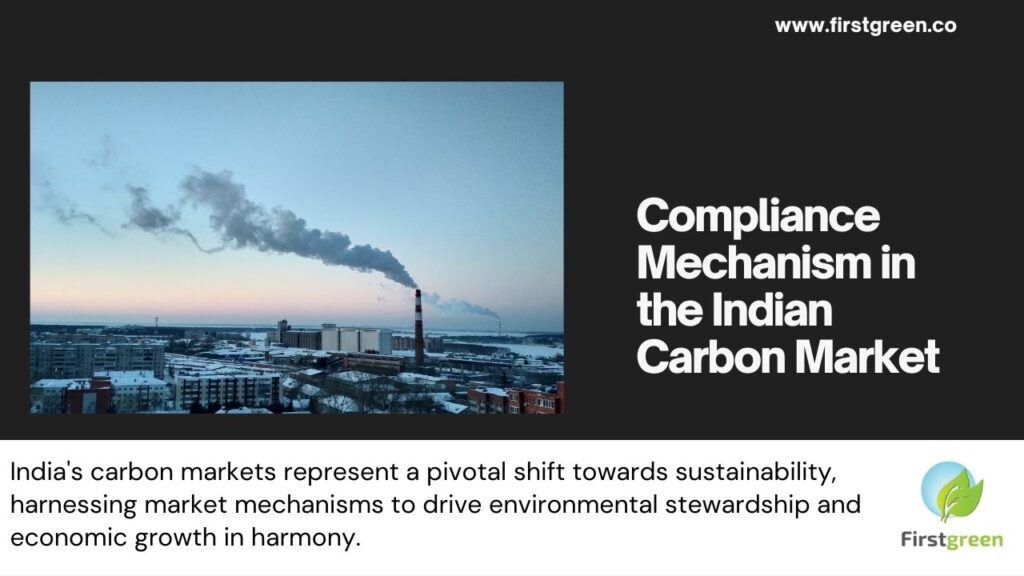Financial Implications & Compliance Strategies in Indian Cement Industry | Emission Factors & Carbon Credits

Introduction
India’s commitment to the Paris Agreement has catalyzed the establishment of the Indian Carbon Market (ICM), aimed at reducing greenhouse gas (GHG) emissions across various sectors. This detailed guide explores the compliance mechanisms under the ICM with a focus on the cement industry, known for its significant carbon footprint. It delves into emission factors, cap applications, compliance strategies, and their financial implications, presented in the Indian context with costs estimated in INR.
Understanding Emission Factors and Caps
Emission Factor Calculation: For a cement company, the emission factor typically includes CO2 emissions due to clinker production. Assuming an average emission factor of 0.85 kg CO2 per kg of cement produced, let’s explore how this plays into compliance.
Cap Application: The Carbon Credit Trading Scheme (CCTS) sets initial caps based on historical emission levels, technological baselines, and industry benchmarks. For our example, the initial cap might be set at 0.75 kg CO2 per kg of cement, with a mandated reduction of 2% annually over a five-year period.
Compliance Strategies and Financial Impact
- Process Upgrades:
- High-Efficiency Separators:
- Cost: Installation costs roughly ₹7.5 crores.
- Benefit: Reduces power consumption by up to 10%, potentially cutting down emissions to 0.05 kg CO2 per kg of cement.
- Clinker Substitution:
- Cost: Minimal if using locally sourced supplementary cementitious materials (SCMs).
- Benefit: Reducing clinker in the cement blend by 10% can decrease the clinker factor to about 0.77 kg CO2 per kg of cement.
- High-Efficiency Separators:
- Shifting to Cleaner Fuels:
- Biomass Use:
- Cost: Retrofitting existing systems can cost around ₹18.75 crores.
- Benefit: Biomass fuels can cut net emissions to 0.65 kg CO2 per kg of cement, reducing emissions by 0.2 kg CO2 per kg from the baseline.
- Biomass Use:
- Purchasing Carbon Credits:
- Scenario and Costs:
- If the cement production is 1 million tons per year, and after all interventions, emissions are at 0.7 kg CO2 per kg (still 0.05 kg above the year-five cap of 0.65 kg CO2 per kg), the company would need carbon credits for 50,000 tons of CO2.
- Cost per Credit: At ₹750 per ton of CO2, the annual expense would be ₹3.75 crores.
- Scenario and Costs:
Case Study: XYZ Cement Ltd.
XYZ Cement Ltd. took comprehensive measures to align with the GHG targets:
- Technology Upgrade: Invested ₹7.5 crores on new separators, improving energy efficiency and reducing emissions.
- Fuel Transition: Spent ₹18.75 crores to switch to biomass, significantly lowering their carbon emissions.
- Carbon Credits: Annually, they purchase carbon credits for ₹3.75 crores to offset any remaining emissions.
Conclusion
This scenario demonstrates that while the upfront investments in clean technology and alternative fuels are substantial (totaling approximately ₹26.25 crores), they significantly reduce the reliance on carbon credits, which are a recurring expense. These investments not only ensure compliance but also establish the company as a sustainable leader in the cement industry.
Future Outlook
As technology advances and the market for carbon credits matures, cement companies will have more opportunities to comply with stricter emissions standards efficiently. These strategies, coupled with supportive government policies and potential incentives, can facilitate the industry’s transition towards a lower carbon footprint.
This guide outlines a framework for cement companies operating within the ICM, providing them with a clear pathway to achieve compliance through technological upgrades, fuel shifts, and strategic use of carbon credits, all within the financial context of the Indian market.